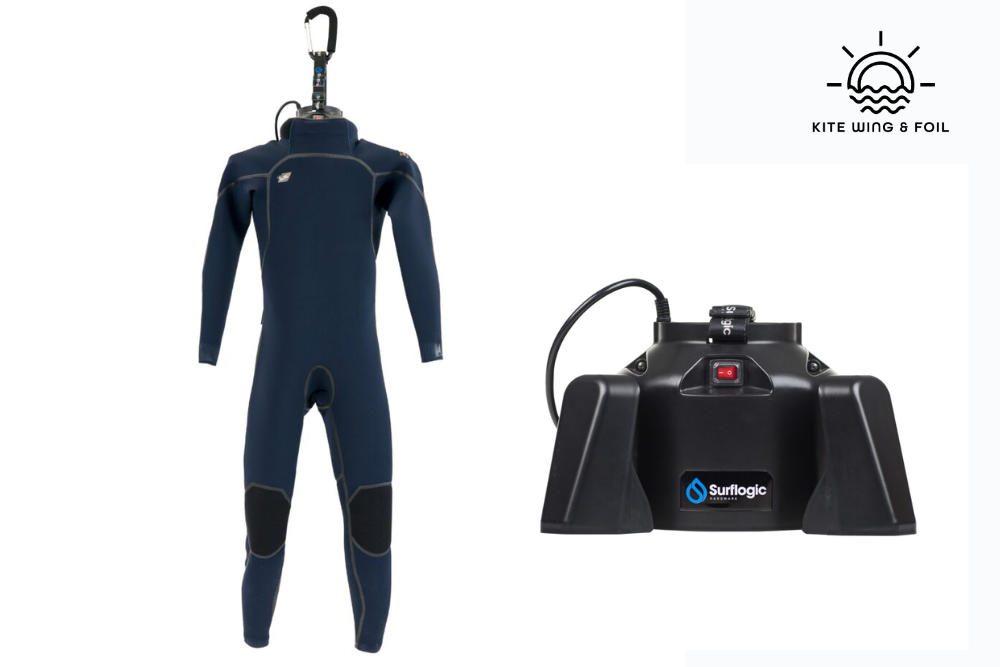
Understanding Wetsuit Care: How to Dry and Maintain Your Gear with a Wetsuit Dryer
Imagine this: You wake up in the morning, ready to grab your board, wear your wetsuit, and jump into the water. Unfortunately, your mood is spoiled because your wetsuit is not warm or dry, and is not ideally fitting in place, it is cold, soggy, and smelly. Yes, we understand it ruins the water sports experience, but understanding the art of wetsuit drying can make all the difference in the comfort and performance you require to have an amazing session.
It is advised to use a second-to-none wetsuit dryer as it eliminates the discomfort of a cold, soggy, and smelly wetsuit and promises your gear is warm, dry, and perfectly fitted for an amazing water sports experience.
Why is it so Essential to Understand How to dry a Wetsuit?
Drying a wetsuit adequately is important for different water sports activities. When a wetsuit is moist or soaked, it can be giving the feeling of cold, sticky, slippery against the skin. This not only minimizes the overall enjoyment of the experience but can also give rise to discomfort and disturbance while in the water.
Sacrificing Comfort
A moist wetsuit can give rise to wetsuit rash, specifically in areas where the material rubs against the skin, like the neck, underarms, and knees. Moreover, the presence of wetness can introduce a feeling of chilliness which makes it troublesome to stay warm, mainly in colder water conditions.
By ensuring that your wetsuit is completely dried during use, you can get rid of these difficulties and enjoy a more comfortable and easier experience in the water.
Waterless neoprene feels warmer and more springy against the skin, allowing you to move comfortably and concentrate on your activity without the interference of cold or moisture feelings.
Odor Control
When a wetsuit remains moist or dewy for a long period, it makes a perfect place for microorganisms like bacteria and mildew to grow, giving rise to the characteristic "wetsuit smell" that many water sports admirers are aware of.
By completely drying the wetsuit after every use, you eliminate moisture from the neoprene material, hindering bacteria and mildew from conditions they require to multiply. This helps to hinder the generation of bad odors and promises your gear remains fresh and hygienic between activities.
Moreover, appropriate wetsuit drying is essential for removing any persisting saltwater residue, which can produce odor buildup over time. Rinsing your wetsuit with fresh water and enabling it to dry completely helps to eliminate salt and other contaminants, minimizing the risk of unpleasant smells developing.
Absence of Durability
Neoprene, the material most wetsuits are made of, is very long-lasting, but it can deteriorate over time if not looked after appropriately.
Moisture and long exposure to saltwater can fuel this degradation process, causing the neoprene to lose its flexibility, become hard, and develop tears and cracks. Moreover, bacteria and mildew grow in a moist environment, further compromising the usefulness of the material.
By effectively drying your wetsuit after every use, you eliminate dampness from the neoprene, protecting it from weakening and losing its functionality.
This helps to keep the wetsuit's versatility, soundness, and overall durability, making certain that it remains capable of providing the warmth, protection, and buoyancy you depend on during water sports activities.
How To Dry a Wetsuit Using A Wetsuit Dryer?
Below, we have created a table to help you understand how to dry a wetsuit using a wetsuit dryer:
| Step | Action |
| 1. Rinse the Wetsuit | Wash your wetsuit with fresh water. Squeeze out extra water. |
| 2. Hang the Wetsuit | Put your wetsuit in the wetsuit dryer. Make sure it's hanging right. |
| 3. Set the Dryer | Choose the right temperature and drying time. |
| 4. Start the Dryer | Turn on the wetsuit dryer and wait for it to dry the wetsuit. |
| 5. Check the Wetsuit | Look at the wetsuit from time to time to make sure it dries properly. |
| 6. Remove Wetsuit | When it's dry, take the wetsuit out of the dryer. It's ready for use! |
How Long Does it Take for a Wetsuit to Dry?
The time it takes to dry a wetsuit depends on different factors like humidity levels, airflow, and the depth of the neoprene material. Usually, it can take around a few hours to a full day for a wetsuit to dry appropriately.
If you are using an appropriate wetsuit dryer, a wetsuit may dry comparably quickly, generally within a few hours. In a well-ventilated area with low humidity and good airflow, a wetsuit may dry rapidly. However, in more humid atmospheres or areas which not have adequate airflow, drying time can be increased, and it may take around a full day or two for the wetsuit to dry completely.
Factors like wetsuit depth and the design of the wetsuit can also impact the time of drying. Thicker wetsuits with more insulation may take more time to dry if set side by side with thinner ones. Moreover, wetsuits having sealed seams or additional layers may catch moisture and need more time to dry completely.
Conclusion: The Best Places, Duration, and Methods for Drying Your Wetsuit
As we say toodle-oo to our dependable wetsuits after each wearying and exhausting activity, it is important to keep in mind the important steps to set the seal on their durability and performance. Proper wetsuit drying and care are crucial for maximizing its performance and durability, so take the proper time to dry it adequately after every use.
By going through some easy steps, preparing your wetsuit to dry won't take you more than two minutes, yet it might cause a change in how long your wetsuit lasts. So, next time you hang up your wetsuit, keep in mind that you are not just drying fabric; you are getting ready for your next aquatic journey. Enjoy the drying process, and may your wetsuit always be prepared for the next wave!
Moreover, buy a wetsuit dryer from Kite Wing & Foil to easily keep your gear dry, comfortable, and ready for your next adventure, ensuring your wetsuit lasts longer and performs better every time.
